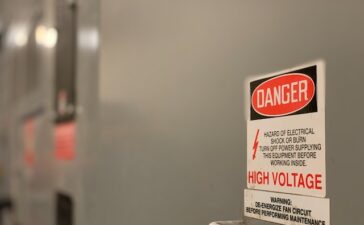There are flammable substances present in certain environments such as chemical processing plants, industrial manufacturing facilities and oil refineries. When installing electrical systems in these areas, there are strict safety standards to adhere to so that the risk of ignition and explosion can be mitigated. In addition to this, you need to carry out maintenance so that the integrity of the electrical systems can be ensured.
When electrical components
Are present in harsh operating conditions along with flammable substances, they can be exposed to mechanical wear, corrosion and insulation breakdown. This is why you need to carry out regular inspections, cleaning and lubrication so that any potential issues can be identified and addressed before they become serious problems. By working with professionals that specialise in hazardous area electrical installation, you will be able to ensure that the equipment is in good working condition and their performance is reliable. You can prevent equipment failures when routine maintenance is carried out. In some situations some equipment failures can disrupt operations in hazardous areas and also become a serious safety hazard. Some of the electrical failures that can occur are arcing, short circuits and breakdown of insulation. These events can lead to sparks or ignition sources and the flammablesubstancescan be ignited as a result which can lead to fire or an explosion. Maintenance personnel will be able to identify potential failure points and rectify them so that the risk of equipment malfunctions is minimised.

You will have an opportunity identify potential hazards in the electrical system
And address them with routine maintenance so that they don’t become a threat to personnel or property. The condition of the electrical equipment will be assessed during the inspection and the maintenance personnel will check for any signs of damage or deterioration. They will also assess the effectiveness of the protective measures in place currently such as seals, barriers and explosion proof enclosures. They will test for concentrations of flammable gas or vapour as well as inspect ventilation systems of the area. They will have the knowledge to check whether the area complies with hazardous area classification requirements so that the environment is safe for operation.

A critical aspect of maintaining electrical systems
In a hazardous area is complying with regulatory requirements. There are regulatory bodies that have established guidelines for designing, installing, operating and maintaining electrical equipment in hazardous areas. Organisations will be able to show their compliance with the regulations by carrying out routine maintain. They will be able to provide documentation to authorities on maintenance activities carried out in the facility along with testing procedures and inspections. Legal risks can be mitigated by adhering to regulatory requirements and you will be able to avoid penalties. In addition to preventing failures, routine maintenance is needed to optimise the performance of electrical systems in hazardous areas. The equipment will be kept well-maintained and they will operate within the specified parameters or guidelines so that the organisation can minimise downtime and optimise energy efficiency of the facility.





